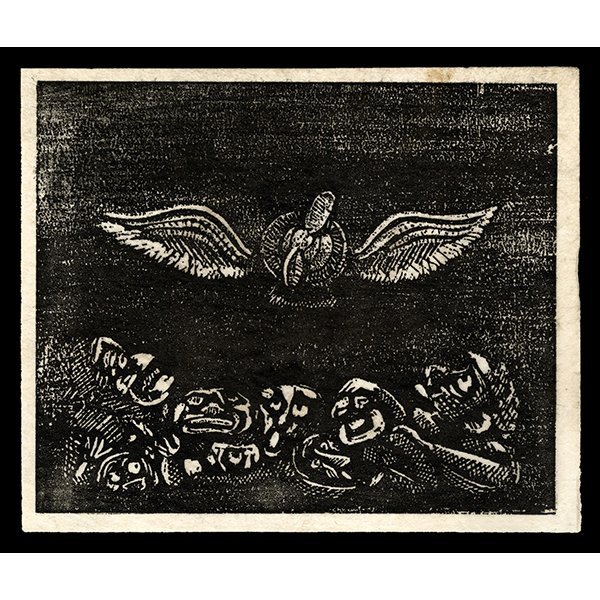<b>OMINOUS BIRD</b>Yasunori Taninakac. 1934$2,500</em>
ARTIST: Yasunori Taninaka (1897-1946)
TITLE: Ominous Bird
MEDIUM: Woodblock print
DATE: c. 1934
DIMENSIONS: 6 1/4 x 7 1/2 inches
CONDITION: Excellent; faint stain at top margin
$2,500.00
Details
Taninaka Yasunori was a sosaku hanga artist that danced to the beat of his own drum. His work draws much of its subject matter from the world of dreams and the subconscious. Taninaka learned the art of printmaking from Nagase Yoshiro in the early 1920s, when Nagase’s designs learned toward expressionism, and later studied etching with Sekino during WWII. Most of Taninaka’s body of work are prints produced for small sosaku hanga magazines, such as Shiro to Kuro (White and Black). Though he made a reasonably good livelihood from his art, Taninaka was known to be thriftless. Near the end of the war, his home was destroyed in an air raid, and he found himself living in a temporary shack and sustaining himself with a small crop of pumpkins he was tending in the ruins of his home. Tragically, he died of malnutrition in 1946.
Perhaps a prophetic vision, “Ominous Bird” anticipates much of the growing conflict in the Pacific region and the eventual military actions leveled onto Japan by allied forces during WWII. The power of this design lies in its black and white format, showcasing the propeller of a plane with the wings of a bird—reminiscent of the insignia of many military insignia used to identify various aviation-related military units. The bottom of the composition reveals several people hunched over, scurrying away from this threatening overhead presence. Taninaka renders the faces with worry and dread. The figure at the lower center resembles the face of the screamer in Edvard Munch’s, “The Scream,” 1893.
Connoisseur's Note
Ominous Bird is a rare self-printed work executed by the artist. Although this design was included in various sosaku hanga do-jin magazines sold via subscription, those impressions were executed on lesser-quality paper and printed by a machine. The do-jin impressions lack the expressive and spirited quality of self-printed impressions such as this work.



